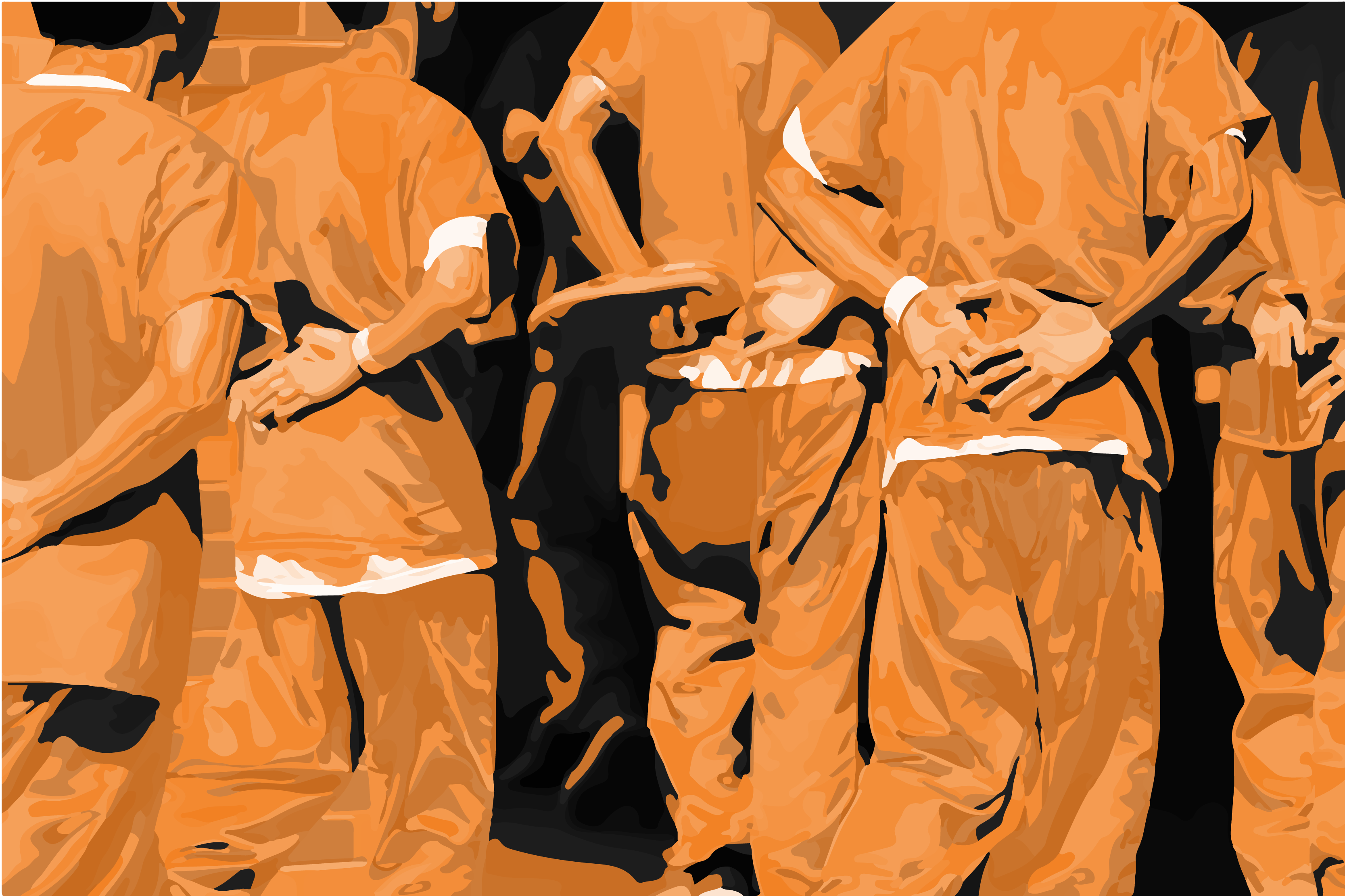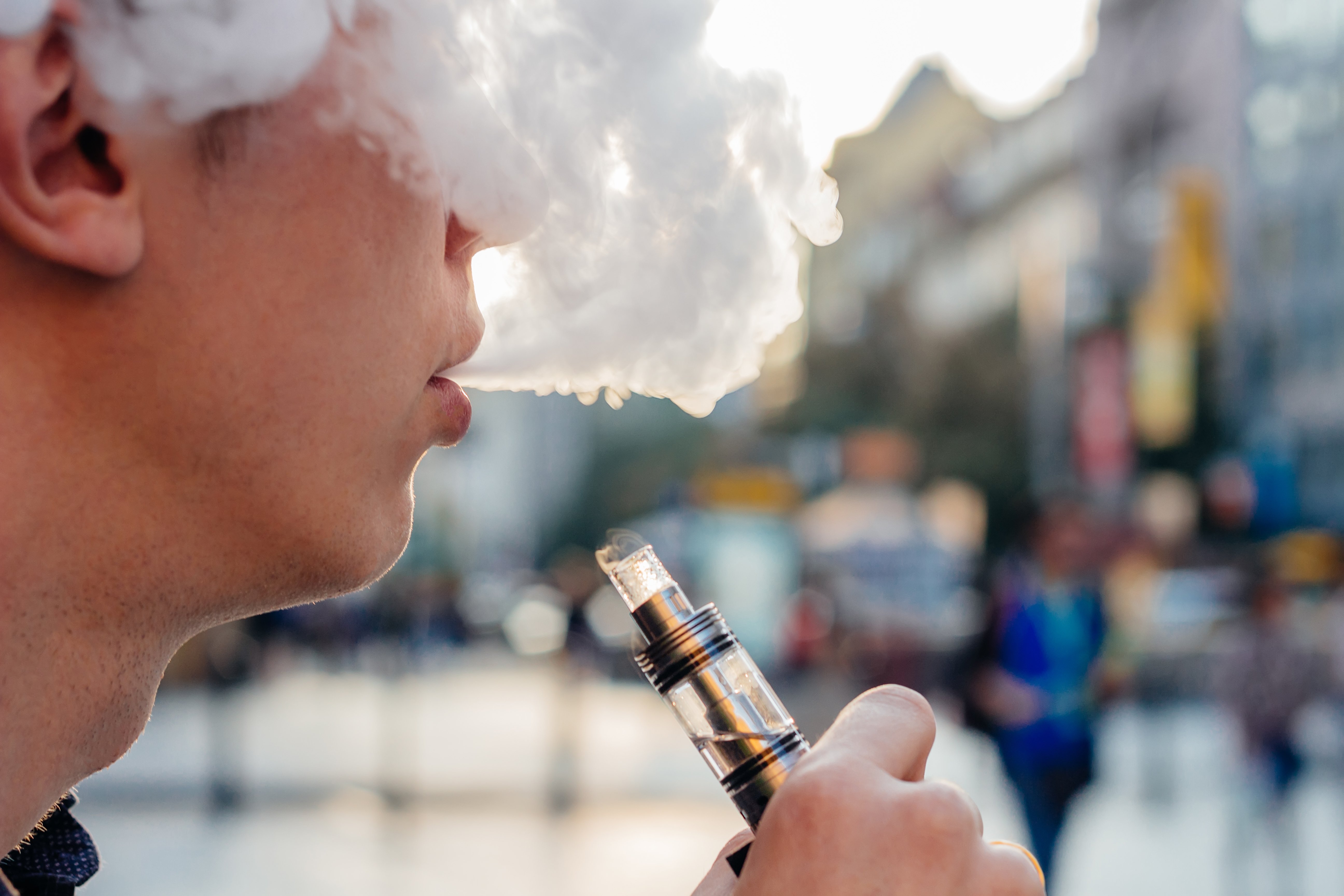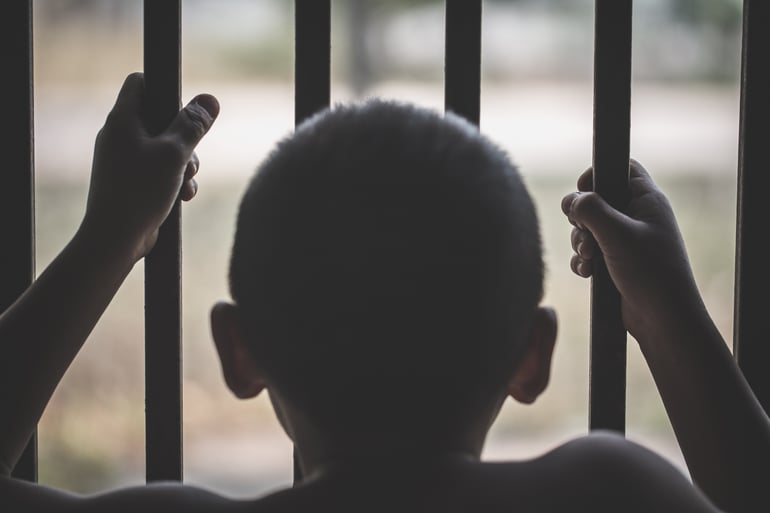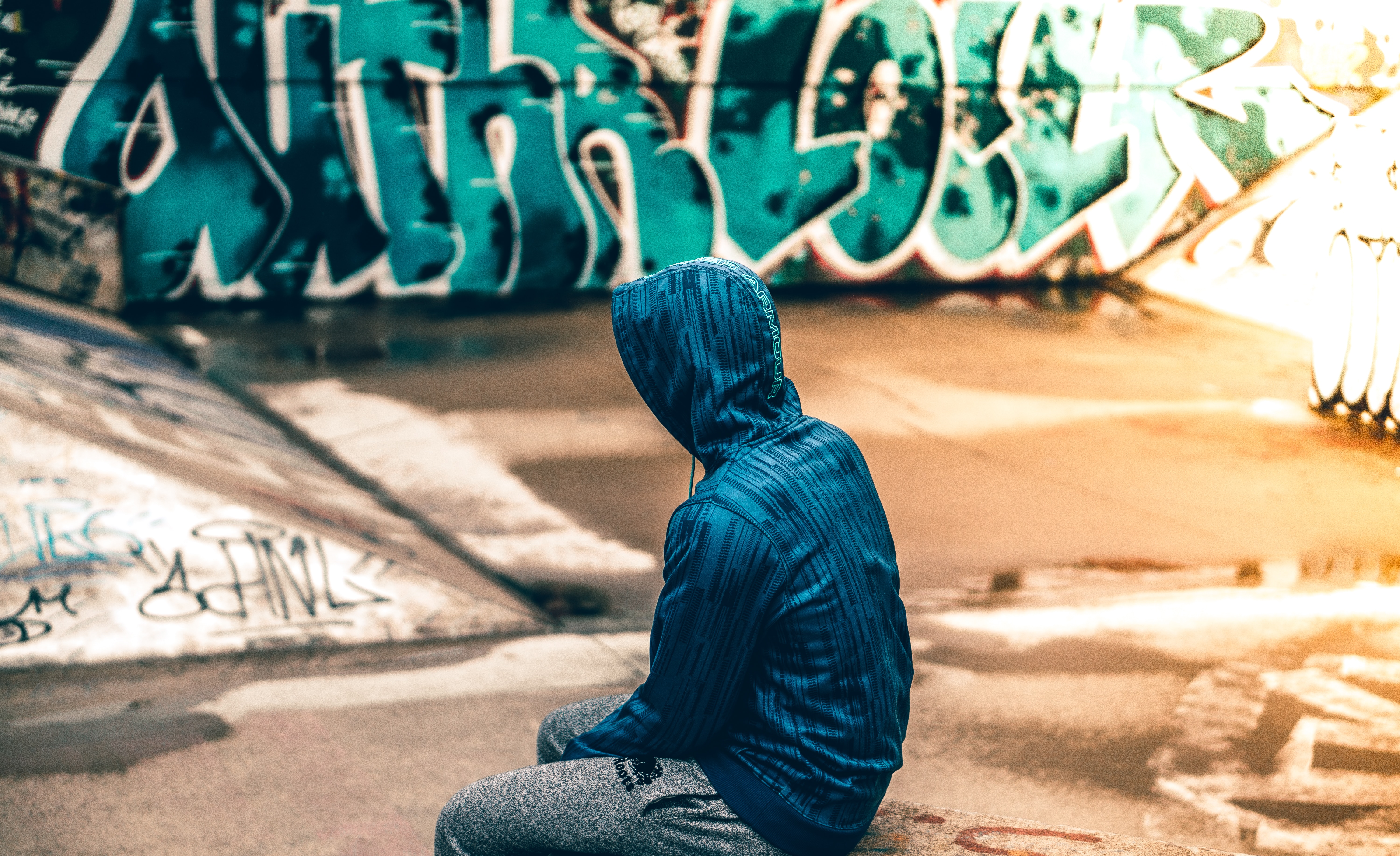
Today we are sharing the story of a mother who felt as though she was losing her son— until Multisystemic Therapy (MST) came into the picture.

Today we are sharing the story of a mother who felt as though she was losing her son— until Multisystemic Therapy (MST) came into the picture.
Topics: Juvenile Justice Reform, MST Success Stories, Troubled Youth
 Life is often full of obstacles that make growing up a difficult road to navigate for at-risk youth. From poverty and physical abuse to drug and alcohol use, teens frequently run into issues that they are still mentally ill-equipped to handle. These experiences can leave them feeling isolated. Inevitably, juveniles end up trying to find acceptance anywhere they can find it. It is in these situations that they can fall prey to the influence of gangs.
Life is often full of obstacles that make growing up a difficult road to navigate for at-risk youth. From poverty and physical abuse to drug and alcohol use, teens frequently run into issues that they are still mentally ill-equipped to handle. These experiences can leave them feeling isolated. Inevitably, juveniles end up trying to find acceptance anywhere they can find it. It is in these situations that they can fall prey to the influence of gangs.
Topics: Juvenile Justice Reform
 Originally created with the intention of aiding adults in quitting traditional cigarettes, e-cigarettes have been finding their way into the hands of teenagers in recent years with an ever-increasing frequency. In 2011, less than five percent of teenagers reported using e-cigarettes; by 2018, that number had jumped to more than 37 percent. Despite being touted as a “safe” and even “healthy” alternative to traditional tar-and-chemical-laden cigarettes, most e-cigarettes still contain nicotine, which has long been known as an addictive substance. And that’s at the heart of the issue of teen e-cigarette use, says Nora D. Volkow, the director of the National Institute on Drug Abuse, “It is urgent that teens understand the possible effects of vaping on overall health, the development of the teen brain and the potential for addiction.”
Originally created with the intention of aiding adults in quitting traditional cigarettes, e-cigarettes have been finding their way into the hands of teenagers in recent years with an ever-increasing frequency. In 2011, less than five percent of teenagers reported using e-cigarettes; by 2018, that number had jumped to more than 37 percent. Despite being touted as a “safe” and even “healthy” alternative to traditional tar-and-chemical-laden cigarettes, most e-cigarettes still contain nicotine, which has long been known as an addictive substance. And that’s at the heart of the issue of teen e-cigarette use, says Nora D. Volkow, the director of the National Institute on Drug Abuse, “It is urgent that teens understand the possible effects of vaping on overall health, the development of the teen brain and the potential for addiction.”
Topics: Juvenile Justice Reform, Substance Abuse

Campaigning for the passing of “Raise the Age Laws” in juvenile justice systems across the U.S. has become a very popular crusade for advocates in recent years, with the aim of keeping children under the age of 18 from being sent to adult prisons when they commit a crime. What has managed to fly under the radar of many of these advocates, however, is the fact that, in many states, children under 13 can still be legally sent to a juvenile detention facility for a crime. In fact, about two thirds of U.S. states have absolutely no minimum age at which a child can be found guilty of a delinquent act. This fact runs contrary to years of research that has shown young people’s brains continue to grow and change well in to their 20s, making them less competent than adults when it comes to making decisions and controlling their actions.
Topics: Juvenile Justice Reform
Posted by MST Services
 Solitary confinement is defined as the isolation of an incarcerated person for 22 to 24 hours per day; often the only interactions a prisoner can expect during solitary are brief encounters with prison guards. Evidence found in the International Journal of Offender Therapy & Comparative Criminology points to the historical Quakers as being the originators of solitary confinement, and it was initially intended to be used as a way to make prisoners take a few days to reflect on their wrongdoings. It wasn’t long, however, before solitary confinement instead came to be used in prisons as a form of punishment, sometimes lasting for weeks, months, and in some cases, even years. The first research into the effects of solitary confinement dates back to the 1830s, after the practice had been introduced to the Eastern State Penitentiary in Philadelphia. Many visitors reported seeing a high rate of mental breakdown among prisoners in solitary, one of the most famous being Charles Dickens, who toured the facility while visiting the United States. Dickens described solitary confinement as a “slow and daily tampering with the mysteries of the brain,” that was “immeasurably worse than any torture of the body.”
Solitary confinement is defined as the isolation of an incarcerated person for 22 to 24 hours per day; often the only interactions a prisoner can expect during solitary are brief encounters with prison guards. Evidence found in the International Journal of Offender Therapy & Comparative Criminology points to the historical Quakers as being the originators of solitary confinement, and it was initially intended to be used as a way to make prisoners take a few days to reflect on their wrongdoings. It wasn’t long, however, before solitary confinement instead came to be used in prisons as a form of punishment, sometimes lasting for weeks, months, and in some cases, even years. The first research into the effects of solitary confinement dates back to the 1830s, after the practice had been introduced to the Eastern State Penitentiary in Philadelphia. Many visitors reported seeing a high rate of mental breakdown among prisoners in solitary, one of the most famous being Charles Dickens, who toured the facility while visiting the United States. Dickens described solitary confinement as a “slow and daily tampering with the mysteries of the brain,” that was “immeasurably worse than any torture of the body.”
Topics: Juvenile Justice Reform
 Growing up is a difficult process for many teens across the U.S., as developing a positive self-image can be a daunting task in the face of society's ever-changing landscape. Teens feel pressure from different areas of their lives: from one's parents, friends, school, job, and even from interactions on social media. It is no wonder, then, that a lot of teens suffer from mental health issues like depression and anxiety. But when teenagers are struggling with a mental health problem and have no healthy outlet to deal with painful or difficult emotions, they can instead end up turning to alcohol or drug use as a form of self-medication. It is a scenario many are familiar with in adults, but with teenagers the risks are much higher because their brains are still developing. At this critical point in their development, drug and alcohol use can be far more problematic.
Growing up is a difficult process for many teens across the U.S., as developing a positive self-image can be a daunting task in the face of society's ever-changing landscape. Teens feel pressure from different areas of their lives: from one's parents, friends, school, job, and even from interactions on social media. It is no wonder, then, that a lot of teens suffer from mental health issues like depression and anxiety. But when teenagers are struggling with a mental health problem and have no healthy outlet to deal with painful or difficult emotions, they can instead end up turning to alcohol or drug use as a form of self-medication. It is a scenario many are familiar with in adults, but with teenagers the risks are much higher because their brains are still developing. At this critical point in their development, drug and alcohol use can be far more problematic.
Topics: Substance Abuse
 One of the most important parts of the child welfare system is the professionals who work in it, dedicating their lives to ensuring the well-being of the children within their communities. Child welfare investigators are social workers who are responsible for protecting children from situations of abuse, neglect, and other forms of mistreatment, by assessing their social, physical, psychological and emotional well-being. Investigators do this by completing a number of different tasks: they make home visits in order to explore allegations of abuse or neglect; they provide assessments of home conditions to determine whether a parent or guardian is providing adequate care; they evaluate whether a child should be removed from their living situation; and they place removed children in either temporary foster care or permanent adoptive families.
One of the most important parts of the child welfare system is the professionals who work in it, dedicating their lives to ensuring the well-being of the children within their communities. Child welfare investigators are social workers who are responsible for protecting children from situations of abuse, neglect, and other forms of mistreatment, by assessing their social, physical, psychological and emotional well-being. Investigators do this by completing a number of different tasks: they make home visits in order to explore allegations of abuse or neglect; they provide assessments of home conditions to determine whether a parent or guardian is providing adequate care; they evaluate whether a child should be removed from their living situation; and they place removed children in either temporary foster care or permanent adoptive families.
Topics: Child Welfare
 When the Juvenile Justice and Delinquency Prevention Act (JJDPA) was passed into law in 1974, a part of the legislation included the creation of State Advisory Groups (SAGs). While the official names for each SAG across the U.S. is determined by the state, they all have the same purpose: to ensure that states are following the JJDPA, acting as a liaison between federal and state governments. SAGs have the authority to help set program goals, to help guide the writing and implementation of new policies, to create a three-year state juvenile justice and delinquency prevention plan, and to administer federal funds received through the JJDPA. This role includes deciding how best to spend each state’s annual federal grants, which have in recent years been on the decline. This reduction in funding has required SAGs to adapt and become more creative with yearly budgeting in order to follow federal regulations, a task that is becoming increasingly difficult for them to manage in order to keep their state in compliance.
When the Juvenile Justice and Delinquency Prevention Act (JJDPA) was passed into law in 1974, a part of the legislation included the creation of State Advisory Groups (SAGs). While the official names for each SAG across the U.S. is determined by the state, they all have the same purpose: to ensure that states are following the JJDPA, acting as a liaison between federal and state governments. SAGs have the authority to help set program goals, to help guide the writing and implementation of new policies, to create a three-year state juvenile justice and delinquency prevention plan, and to administer federal funds received through the JJDPA. This role includes deciding how best to spend each state’s annual federal grants, which have in recent years been on the decline. This reduction in funding has required SAGs to adapt and become more creative with yearly budgeting in order to follow federal regulations, a task that is becoming increasingly difficult for them to manage in order to keep their state in compliance.
Topics: Juvenile Justice Reform
 The move away from traditional detention settings for juvenile offenders, and instead toward more rehabilitative ones, has been a process long in the making in juvenile justice departments across the United States. Many states have made great strides in relying less on incarceration and more on community-based alternative services for their young offenders. Often, the biggest roadblock that states run into in attempting to make these types of changes to their systems is figuring out exactly how to fund them. This very question is the subject of a recently released report by researchers at the Urban Institute, who suggest that communities simply need to get creative when it comes to funding juvenile justice programs. According to Samantha Harvell, a principal policy associate at the institute, “It’s time to shift the conversation to a solutions-based approach.”
The move away from traditional detention settings for juvenile offenders, and instead toward more rehabilitative ones, has been a process long in the making in juvenile justice departments across the United States. Many states have made great strides in relying less on incarceration and more on community-based alternative services for their young offenders. Often, the biggest roadblock that states run into in attempting to make these types of changes to their systems is figuring out exactly how to fund them. This very question is the subject of a recently released report by researchers at the Urban Institute, who suggest that communities simply need to get creative when it comes to funding juvenile justice programs. According to Samantha Harvell, a principal policy associate at the institute, “It’s time to shift the conversation to a solutions-based approach.”
Topics: Juvenile Justice Reform

An estimated 400,000 children are in foster care across the United States at any given time. While foster care is a necessary option for children in unsafe homes, it is intended to be a temporary solution, though this is often not the case for many in the system. Some children instead find themselves in foster care for a year or more. According to the National Foster Youth Institute, over 20,000 youth age out of the foster system every year before being placed in a permanent home. For many of these children, being left without a stable home for an extended period of time severely affects the quality of their education, as they struggle to keep up academically and connect with their peers.
Topics: Child Welfare
3490 Piedmont Rd NE, Suite 304
Atlanta, GA 30305